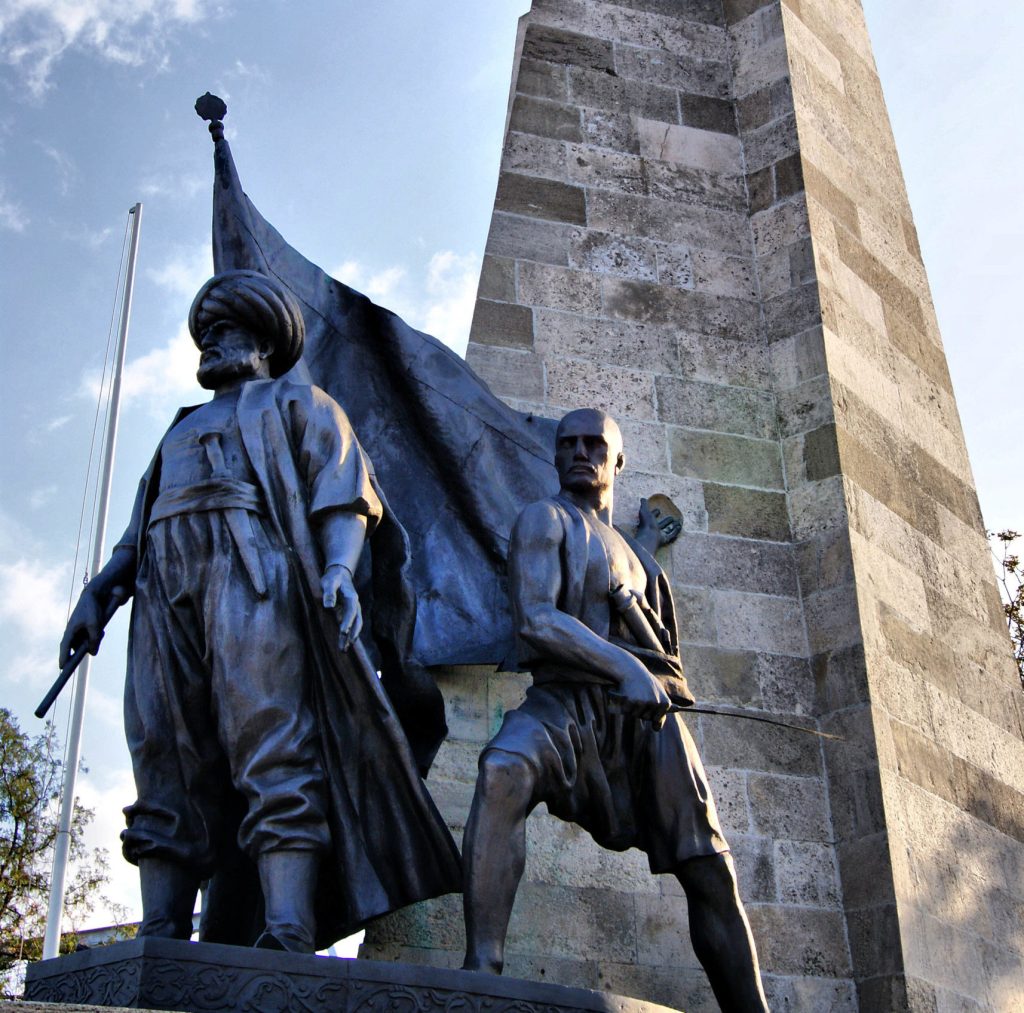The history of the Middle East is rich with prominent figures who made a huge impact on their country’s history. Today, their statues honor their influence on the region’s cultural, political, and social landscapes. Here are some examples of these statues, each celebrating a unique figure in our history.
The Statue of Saladin (Syria)
Saladin, the first Sultan of Egypt and Syria, is best known for his leadership during the Crusades, particularly for recapturing Jerusalem in 1187. A statue of Saladin stands proudly near the Citadel of Damascus in Syria.
Created by Syrian sculptor Abdallah al-Sayed in 1993, the statue depicts Saladin on horseback, flanked by two of his warriors. This statue commemorates Saladin’s legacy as a unifier of Muslim lands and a formidable leader.
Saad Zaghloul Statue (Egypt)
Saad Zaghloul was the leader of the Egyptian nationalist movement against British occupation and the founder of the Wafd Party. The statue depicts him in a statesmanlike pose, reflecting his leadership during the 1919 revolution and his efforts towards achieving Egypt’s independence. The statue is prominently located in Saad Zaghloul Square.
The Statue of Ramses II (Egypt)
The statue of Ramses II is another amazing monument in Egypt. Ramses II, also known as Ramses the Great, was one of Egypt’s most powerful and celebrated pharaohs, reigning for 66 years from 1279 to 1213 BC.
One of the most famous statues of Ramses II was originally located in the Ramesseum, his mortuary temple in Thebes.
Today, an 11-meter-tall statue of him can be found at the Egyptian Museum in Cairo. This statue shows the pharaoh’s grandeur and the amazing detail of ancient Egyptian sculpting art.
The Statue of Avicenna (Iran)
Avicenna, known as Ibn Sina in the Islamic world, was a Persian polymath who made significant contributions to various fields, including medicine, philosophy, and science.
Born in 980 AD in what is now Uzbekistan, Avicenna’s works, such as “The Book of Healing” and “The Canon of Medicine,” had a profound impact on both Islamic and European intellectual traditions.
A prominent statue of Avicenna stands in his hometown of Hamedan, Iran, commemorating his legacy. The statue features Avicenna seated with a book in his lap, symbolizing his vast knowledge and scholarly achievements.
Umm Kulthum Statue (Egypt)
The statue of Umm Kulthum, located on the island of Zamalek in Cairo, honors one of the most iconic and beloved singers in the Arab world. Known as the “Star of the East,” Umm Kulthum’s music and voice have left a lasting legacy in Egypt and beyond.
The statue depicts her in a classic pose, often seen on stage, symbolizing her immense influence on Arabic music and culture.
The Statue of Ibn Khaldun (Tunisia)
Ibn Khaldun was a renowned Arab historian and philosopher, born in Tunis in 1332. He is often regarded as one of the founding fathers of modern sociology, historiography, and economics. His most famous work, “The Muqaddimah” (Introduction), laid the foundations for the study of history and social sciences.
A statue of Ibn Khaldun stands in the heart of Tunis, capturing him in a contemplative pose with a book in hand. This statue honors his intellectual contributions and his lasting influence on various fields of knowledge.
The Statue of Mustafa Barzani (Iraq)
Mustafa Barzani was a prominent Kurdish leader and the founding figure of the Kurdistan Democratic Party (KDP). He is celebrated for his efforts to achieve greater autonomy and rights for the Kurdish people in Iraq.
In Erbil, the capital of the Kurdistan Region, a statue of Barzani stands in Barzani Park. This statue depicts him in traditional Kurdish attire, highlighting his role as a champion of Kurdish identity and self-determination.
The Statue of Zayed bin Sultan Al Nahyan (Egypt)
The statue of Sheikh Zayed bin Sultan Al Nahyan, the founding father and first President of the United Arab Emirates, was unveiled in 2015 in Shaikh Zayed City, located in the 6th of October area in Giza, Egypt.
Celebrated for uniting the seven emirates and leading the UAE to modernization, the statue symbolizes his generous and compassionate relationship with Egypt. Crafted by sculptor Essam Darwish, the statue is made of 7 tonnes of pure bronze, stands 7.35 meters high, and reaches 17 meters with its pedestal.
The unveiling ceremony, attended by Egyptian and UAE officials, showed the strong ties between the two nations.
These statues of historical figures in the Middle East commemorate their achievements and serve as a symbol of our rich culture and history. They continue to inspire people from all over the region, reminding us of great figures who shaped our world.
WE SAID THIS: Don’t Miss…Sustaining Culture Through Taste: The Resilience Of Palestinian Cuisine



